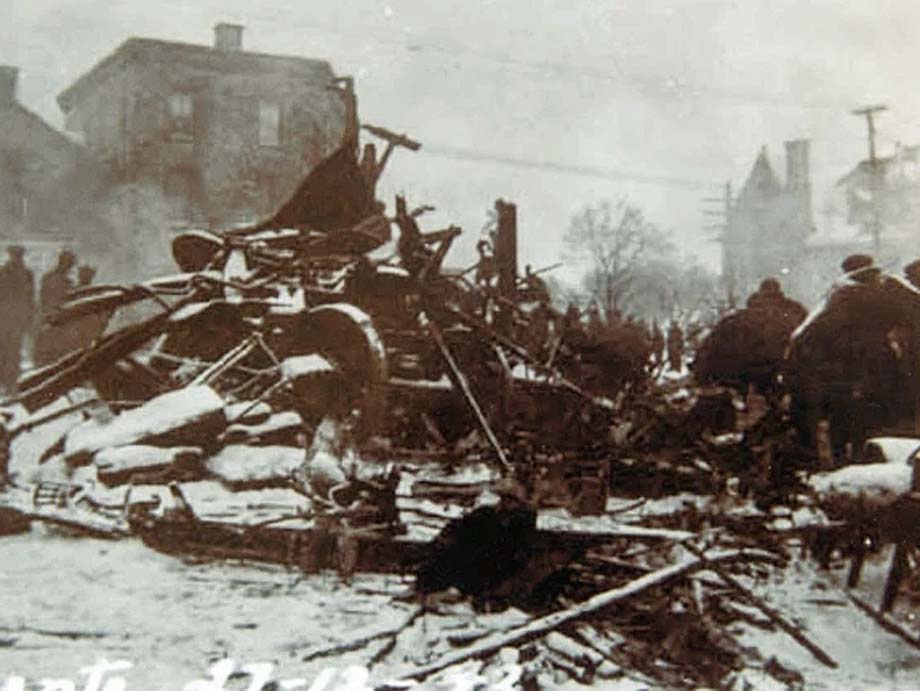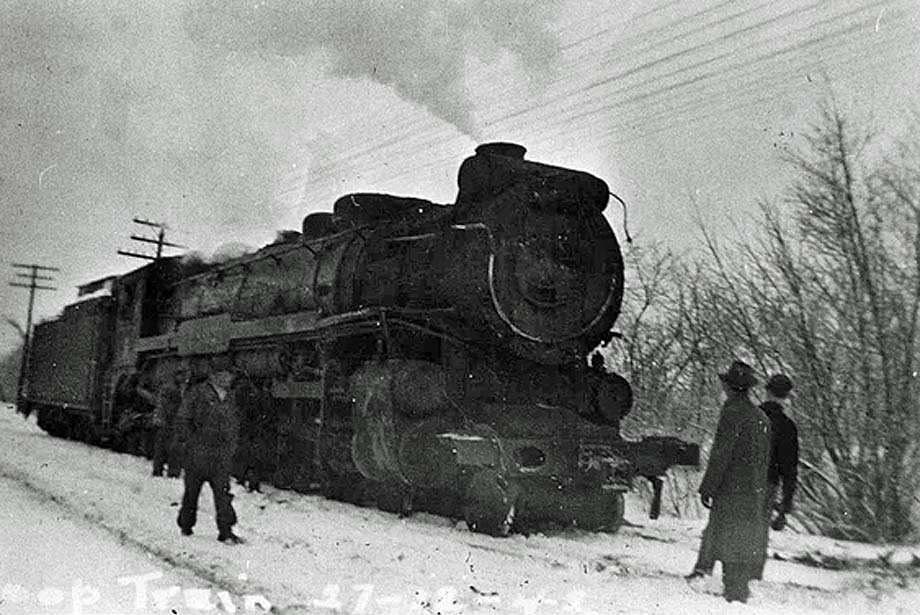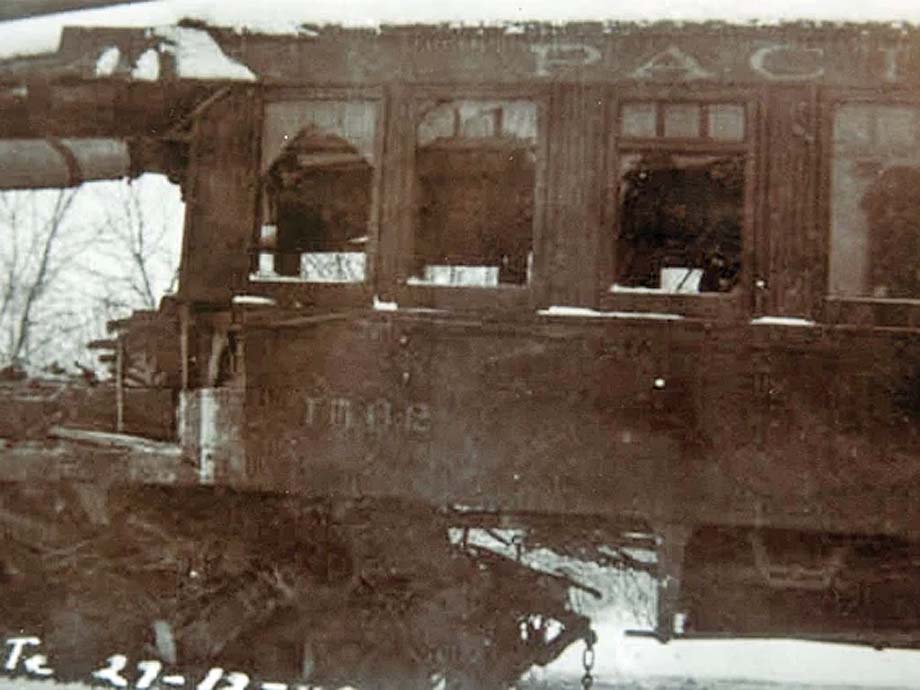
Almonte Ontario - Bernie Turcotte remembers the bright light.
He is among only a few living survivors of the Ottawa Valley's worst disaster, the 27 Dec 1942 Almonte train wreck that
killed 39 people and injured more than 150, shattering the Christmas holidays for families across the
region.
Turcotte was only five-years-old.
He and his parents and infant sister had been visiting family in Petawawa and were taking the Pembroke local train back
to Ottawa where his father, Maurice Turcotte, worked for Bell Canada.
The train was packed, having added extra cars to carry the heavier load of passengers, many of whom were young and
worked for Canada's public service at the height of the Second World War.

The train which had started its journey in Petawawa where the Turcotte family had boarded, had chugged along the
railway, stopping frequently to pick up more passengers.
By the time it reached Almonte it was more than a half hour off its schedule, but its crew was unaware that a much
heavier and faster troop train was trailing it.
In Almonte, the two trains would collide.
The Turcotte family was in the last carriage of the passenger train, seated across from the O'Brien and Giesebrecht
families who were also returning to Ottawa for work.
Harold and Jean O'Brien were travelling with their young son, Jackie, and Jean's sister, Hilda Raby who was expecting a
child in a few weeks.
They had been home for the holidays with the extended Giesebrecht family in Petawawa.
In the seconds leading up to the crash, Bernie Turcotte had left his seat to look out the balcony at the back of the
train.
The curious youngster quickly returned to his mother after opening the balcony door and feeling the biting wind and
swirling snow hit his face.
It was a miserable night, with sleet falling and the visibility poor, but the little boy did see
something.
He asked his mother, Cecile, "Mommy what is that light?"

As the troop train rounded a bend and crossed the Mississippi River on its approach to the Almonte station, the
engineer, Lorne Richardson, saw the reflection of his train's lights on the glass door at the back end of the passenger
train.
He applied his brakes, but it was too late.
The troop train engine barrelled through the last three wooden coaches of the passenger train.
Passengers who weren't instantly killed by the brute force of the locomotive hitting their train were thrown from their
seats or pinned under wreckage.
Soldiers on the troop train, as well as doctors, nurses, and ordinary citizens worked for hours trying to save lives
and removing the dead from the crash scene.
News of the horrific accident travelled quickly.
Phone lines were jammed.
Families of those who were on the train arrived in Almonte trying to find their loved ones, and the Ottawa Civic
Hospital prepared for the arrival of dozens of the injured.
The Almonte Town Hall and O'Brien Theatre, two of the closest buildings to the crash zone became temporary
morgues.
In Ottawa, Prime Minister Mackenzie King awakened to news of the tragedy.
In his diary, King wrote about preparing a statement for the press and being relieved that one of his staff members had
survived the crash.
"Learned later that Miss Z. was on the train. Fortunately, was on the car that was ahead of the 3 in which most of
the people were killed. She had been given a seat by some soldier in the smoking room, otherwise might have suffered
serious injuries," scribbled King.
In Toronto, new Premier Gordon Conant promised a thorough investigation of the crash, ordering that the province's lead
coroner, Dr. Smirle Lawson, would lead an inquest to determine the cause of the wreck.
The inquest was scheduled to begin in early January, only a couple of weeks after the accident, and following intense
interrogations of the crews of both trains.
The pressure mounted on troop train conductor John Howard, who on the eve of the inquest died by suicide fearing he
would be blamed for the accident.
Howard was nearing retirement.
His death draped a darker cloud over the inquest which was held in the Town Hall, the same place where days earlier the
dead had been identified by grieving families.
The inquest placed the blame on the railway company that operated both trains, exonerating the crews of any wrongdoing,
but the Transport Board, which conducted its own investigation, concluded that the crews had made errors that
contributed to the crash.
The Ontario government opted not to lay any criminal charges, doubting it could get any convictions because there were
so many things that had gone wrong leading up to the accident.
Bernie Turcotte and his parents spent months in hospital.
His 8-month-old sister Denise was among the victims of the crash.
Hilda Raby and Jean O'Brien both survived the crash, but were also hospitalized for many weeks.
Jean's husband, Harold O'Brien and the couple's 2-year-old son Jackie, were killed.
Both families sued the Canadian Pacific Railway company and received financial settlements.
The train station in Almonte was torn down years ago.
The tracks have been removed, but at the site of the crash there is a large, engraved, stone that names each of the
passengers who were killed in the crash, including the youngest victim, Bernie Turcotte's little sister.
Eighty years later, the memories of that fateful night remain embedded in Turcotte's mind, a memory that will remain
with him for the rest of his life.
It remains one of the worst train accidents in Canadian history.
Jamie Bramburger.
(likely no image with original article)
(usually because it's been seen before)
provisions in Section 29 of the
Canadian Copyright Modernization Act.


